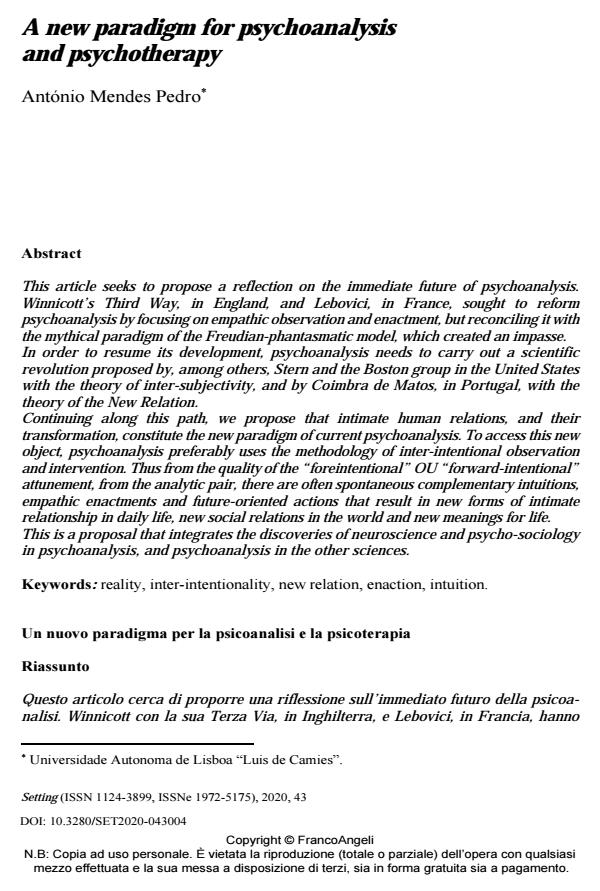A new paradigm for psychoanalysis and psychotherapy
Journal title SETTING
Author/s António Mendes Pedro
Publishing Year 2020 Issue 2020/43
Language English Pages 37 P. 63-99 File size 313 KB
DOI 10.3280/SET2020-043004
DOI is like a bar code for intellectual property: to have more infomation
click here
Below, you can see the article first page
If you want to buy this article in PDF format, you can do it, following the instructions to buy download credits

FrancoAngeli is member of Publishers International Linking Association, Inc (PILA), a not-for-profit association which run the CrossRef service enabling links to and from online scholarly content.
This article seeks to propose a reflection on the immediate future of psychoanalysis. Winnicott’s Third Way, in England, and Lebovici, in France, sought to reform psychoanalysis by focusing on empathic observation and enactment, but reconciling it with the mythical paradigm of the Freudian-phantasmatic model, which created an impasse. In order to resume its development, psychoanalysis needs to carry out a scientific revolution proposed by, among others, Stern and the Boston group in the United States with the theory of inter-subjectivity, and by Coimbra de Matos, in Portugal, with the theory of the New Relation. Continuing along this path, we propose that intimate human relations, and their transformation, constitute the new paradigm of current psychoanalysis. To access this new object, psychoanalysis preferably uses the methodology of inter-intentional observation and intervention. Thus from the quality of the "foreintentional" OU "forward-intentional" attunement, from the analytic pair, there are often spontaneous complementary intuitions, empathic enactments and future-oriented actions that result in new forms of intimate relationship in daily life, new social relations in the world and new meanings for life. This is a proposal that integrates the discoveries of neuroscience and psycho-sociology in psychoanalysis, and psychoanalysis in the other sciences.
Keywords: Reality, inter-intentionality, new relation, enaction, intuition.
António Mendes Pedro, A new paradigm for psychoanalysis and psychotherapy in "SETTING" 43/2020, pp 63-99, DOI: 10.3280/SET2020-043004